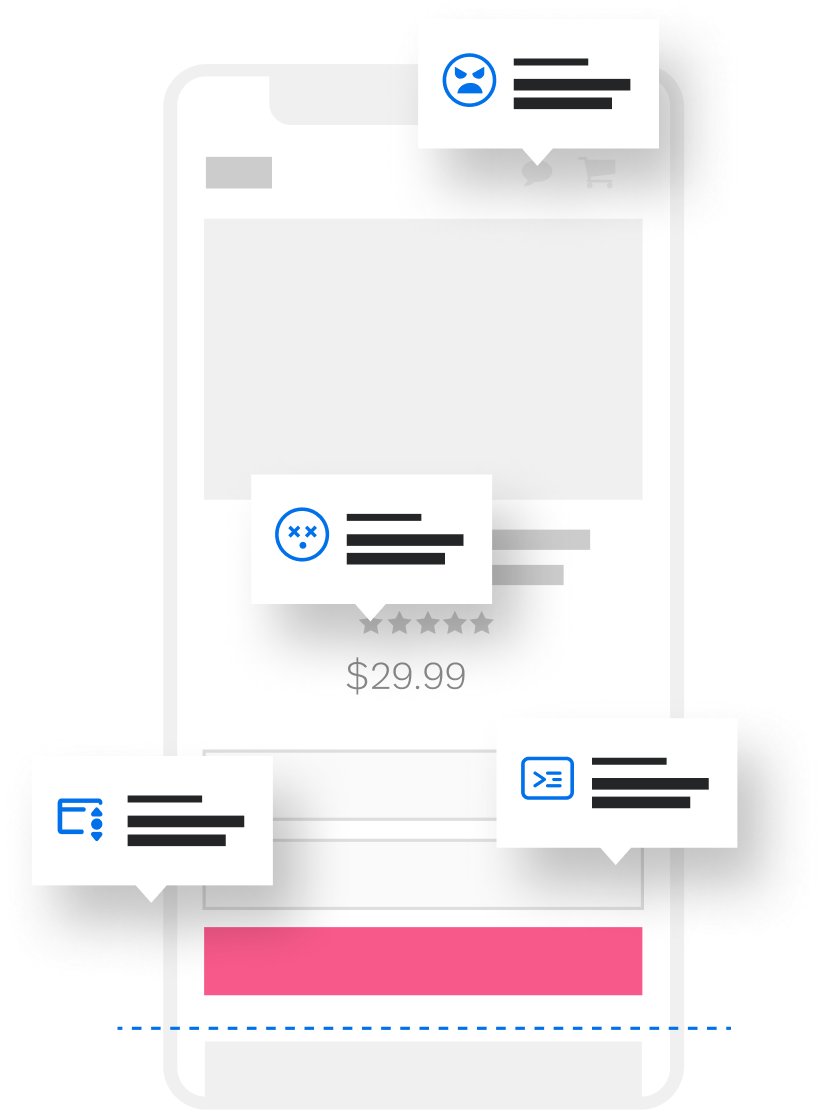Top strategies to accelerate mobile app growth in 2023
- Wednesday, March 22nd, 2023
- Share this article:
Dani Schenone, Senior Product Marketing Manager at FullStory, offers advice on fixing pain points in your app and using in-app upselling to drive retention and revenue.
 In 2023, the mobile app market is estimated to be worth $106 billion (£87 billion), making the opportunity for businesses enormous. That said, only 0.5 per cent of all apps achieve success. It’s a huge market, with incredible opportunity and challenges for those who enter.
In 2023, the mobile app market is estimated to be worth $106 billion (£87 billion), making the opportunity for businesses enormous. That said, only 0.5 per cent of all apps achieve success. It’s a huge market, with incredible opportunity and challenges for those who enter.
The key to rising to the top is no longer relying on a “growth at all costs” mentality. Instead, the new key is focusing on data-led growth: growth that eliminates guesswork, enables teams to invest in the right areas, and keeps them from getting distracted on what’s irrelevant.
The lock that opens the door to sustained profit is an impactful retention strategy: one that delights customers and sustains their lifetime value.
When you combine customer delight and sustained lifetime value, you open a door to growth that’s scalable, optimized, and positioned to weather the years ahead.
But where can mobile teams begin this journey? Here, we’ve assembled two strategies to enable teams to grow.
Strategy 1: Identify and fix pain points in your mobile app
Data talks, but it’s the listening that gets you the number one spot on the app stores. How do you do this? By combining quantitative data and qualitative insights using the what, when, where, and why framework:
- What are the exact pain points customers experience?
- When do customers experience them?
- Where and at what stage of the journey do customers encounter them?
- Why are they encountering these issues in the first place?
Finding the answers requires being able to extract specific metrics and insights in the customer experience–at a scalable level.
To find the what, focus on monitoring frustration signals like rage clicks, dead clicks, or error clicks. To find the when and where, use a session replay tool to get that fly-on-the-wall experience of your users’ app visits. To answer the why, achieve scalable insights through segmenting and filtering the data to double-tap on impacted cohorts. Check out a couple quick definitions on a few of those frustration metrics below:
- Rage click: generated by users who repeatedly click on an element, possibly in frustration, signaling a misalignment of user expectation and app action. Watching out for this activity can uncover quick wins for improvement.
- Error click: surface sessions with a click right before a client-side Javascript error or console error occurs. These errors can create frustrating experiences. Keeping an eye on these can help you quickly resolve bugs and maintain a positive app experience.
- Dead click: another way to find bugs or barriers within your app. An example of a dead click is when a user clicks on the copy that is blue and underlined, expecting it to be a link–when it’s not. This signal helps ensure your app is intuitive and user-friendly.
 Using these four questions, you can start to identify any friction points in your app, improving app usage across the customer lifecycle.
Using these four questions, you can start to identify any friction points in your app, improving app usage across the customer lifecycle.
Strategy 2: Focus on in-app upselling to drive retention and revenue
An impactful retention strategy is paramount to enhancing and sustaining customer lifetime value (CLV). Here are five tips for a successful retention strategy that will slash your CLV goals.
- Build urgency. No one likes feeling left out (hello, FOMO), and with limited-time offers that illustrate a countdown—or “only a few left in stock!” messaging—you can entice the customer to act now, rather than later (or never).
- Choose the right moment. Time your upsell offer wisely. What kinds of behaviors are you using to track when it’s the right time to present an offer? Think about the stage in the customer journey you want to show the offer.
- Use emotional messaging. Craft language that appeals to users’ emotions–either overtly or through subtle cues. Humans take action based on emotion, so ask yourself, “What kind of emotion are they feeling, and how can I use that to deliver a message that’ll convert?”
- Use tactical pricing. Consider tactics like price anchoring, dynamic pricing, or reducing annual subscription rates (compared to monthly) to raise the value of a subscription in a user’s mind.
- Let data guide you. Remember, data talks, but the real magic happens when you listen. Use the data to uncover the customer’s needs, and how the experience responds to that. Allow data to help you find the most impactful points of revenue loss, fine-tune through A/B testing, and other experimentation methods.
It’s important to note that success can’t be achieved without robust, high-quality data. Measuring the right sort of growth is key to assessing the true impact of an upselling strategy.
Growth and retention–one cannot thrive without the other
“Growth at all costs” is no longer part of the app industry’s ethos. Instead, it has been replaced with something more sustainable, more strategic, and more impactful. Rather than placing the focus merely on new users, the lifetime value of users is now at the forefront of business profitability. That requires a business to not only execute a data-led growth strategy, but also a data-led retention strategy that keeps customers coming back.
For more information on how businesses can accelerate mobile app growth, download the complete guide.
















